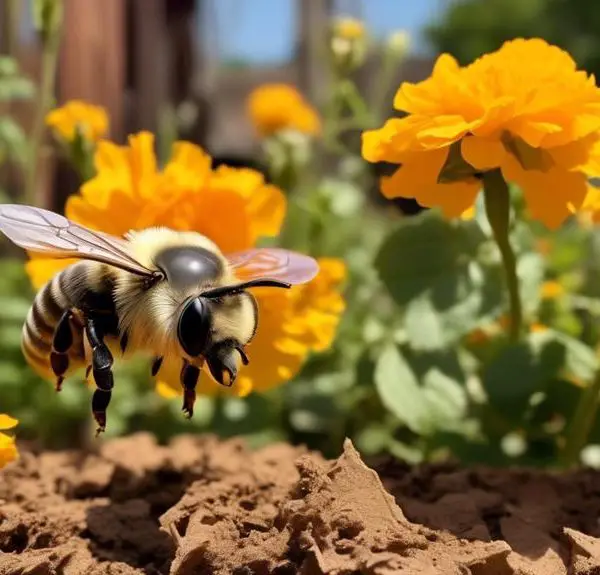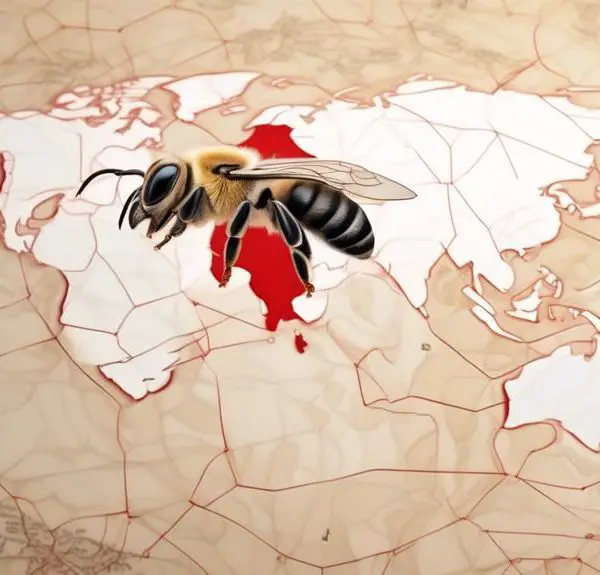Wondering if leaf cutter bees are a menace to your plants or vital garden allies? Discover the surprising truth in this enlightening read.
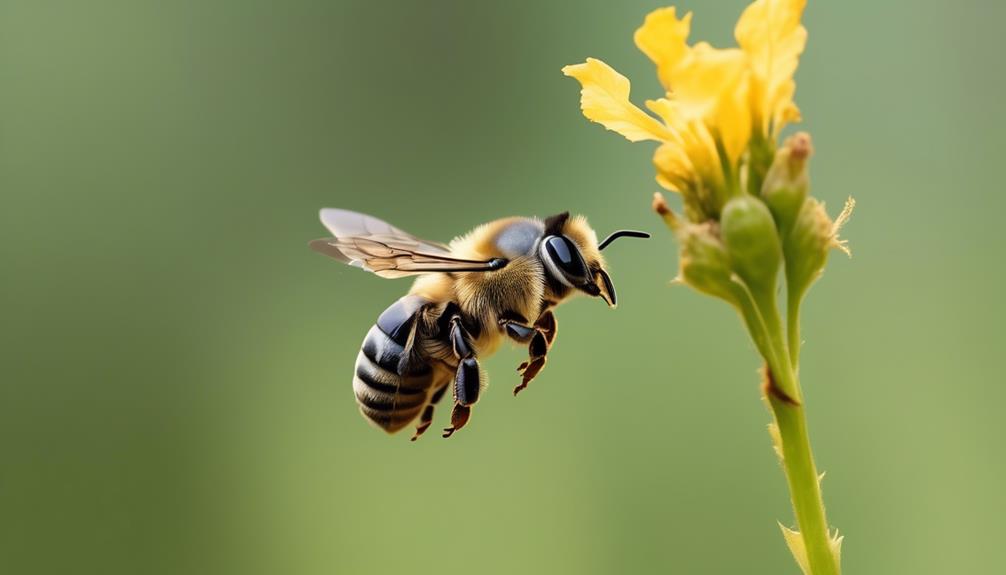
Are Leaf Cutter Bees Harmful to Plants
Like a skilled barber with a razor-sharp blade, the leaf cutter bee meticulously shears pieces from your plants.
You've seen the evidence in the neat, circular sections missing from leaves, but you're unsure whether this bee is a friend or foe to your garden.
Is this tiny insect causing more harm than good, or is its presence an essential part of the ecosystem's balance?
Let's investigate the impact of these intriguing garden visitors, and you might find yourself surprised by what you uncover.
Key Takeaways
- Leaf cutter bees are not harmful to plants and actually stimulate growth and diversity in gardens.
- Their precise cutting and pollination benefits outweigh any minimal aesthetic damage they may cause.
- Planting diverse species of plants and using physical barriers can help protect prized plants from excessive leaf cutting.
- Understanding the life cycle and importance of leaf cutter bees can help appreciate their role in sustaining plant health and promoting a biodiverse environment.
Understanding Leaf Cutter Bees
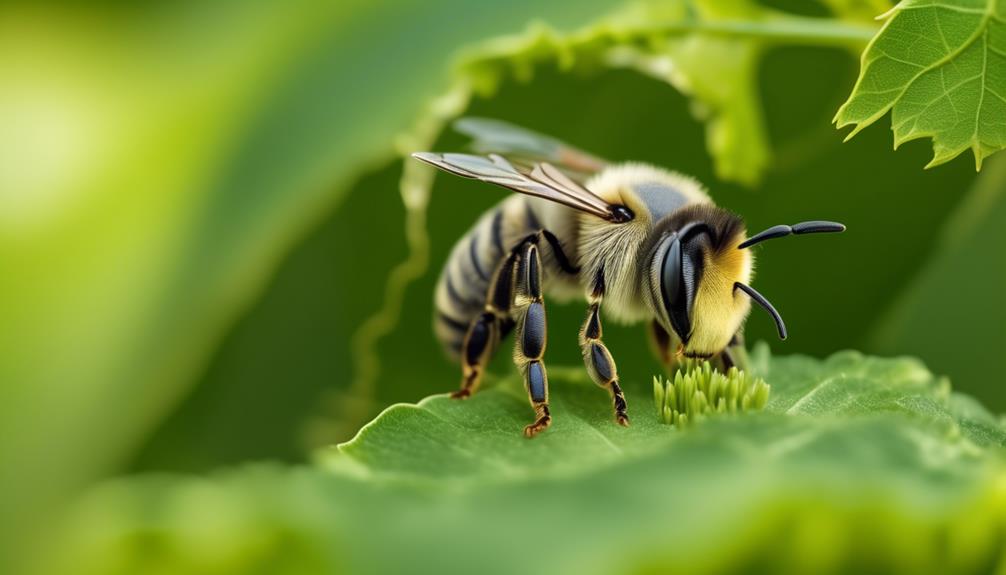
Let's delve into the fascinating world of leaf cutter bees, industrious insects that play a crucial role in the ecosystem. You might be surprised to learn that these bees are incredibly important for plant propagation. Unlike honeybees, they don't collect pollen on their legs, but carry it on their abdomen where it's less likely to be lost in transit.
Leaf cutter bees are solitary creatures, and each female is responsible for constructing and provisioning her own nest. She creates a leaf-lined cell, where she lays an egg and provisions it with pollen and nectar. This process is repeated until she's filled her nest with future generations of leaf cutter bees.
When it comes to leaves, they're not damaging your plants. The leaf fragments they remove are used to build their nests. They're incredibly precise and only cut semi-circular or circular pieces. In fact, the little bit of damage they do is far outweighed by their pollination benefits.
The Life Cycle of Leaf Cutter Bees
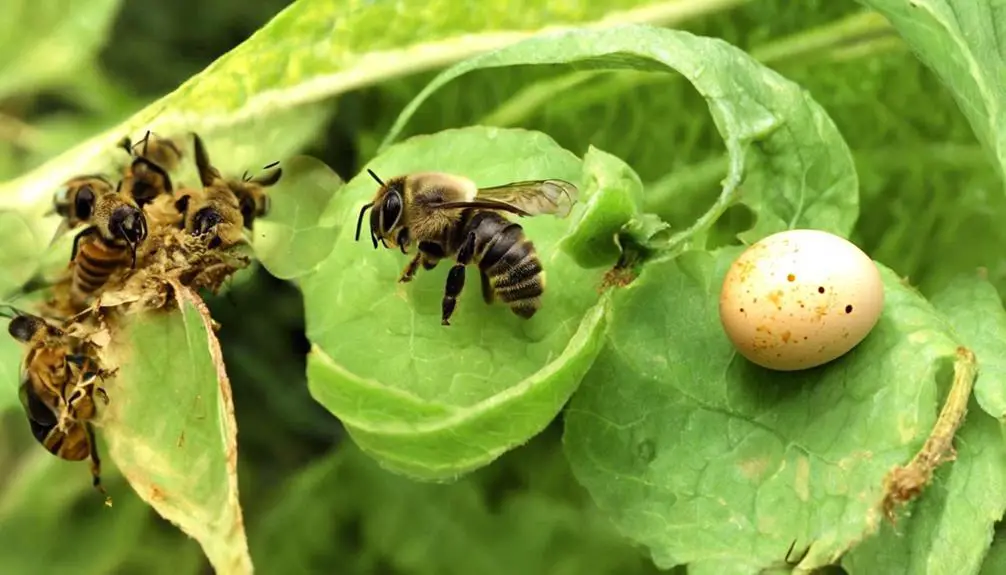
Delving into the life cycle of leaf cutter bees, you'll find a fascinating sequence of events that truly highlights their significance in our ecosystem. These bees start their lives as eggs, laid by the queen in a leaf cell she's crafted and filled with pollen for nourishment.
After a few days, the eggs hatch into larvae. They'll spend their time eating the pollen provided, growing rapidly. After a couple of weeks, the larvae spin silk cocoons and enter the pupa stage. At this point, they're transforming into their adult form.
By late summer or early fall, the adult leaf cutter bees emerge, ready to feed and mate. Interestingly, the males typically emerge first, waiting for the females. Once they've mated, the females start their leaf-cutting work, preparing for the next generation. Each leaf piece they cut is used to build the cells for their eggs.
However, leaf cutter bees don't live long. After laying her eggs, the female dies, and the cycle begins anew with the next generation. This cycle is an essential part of maintaining the balance in our ecosystem, making these bees invaluable.
Leaf Cutter Bees and Plant Health
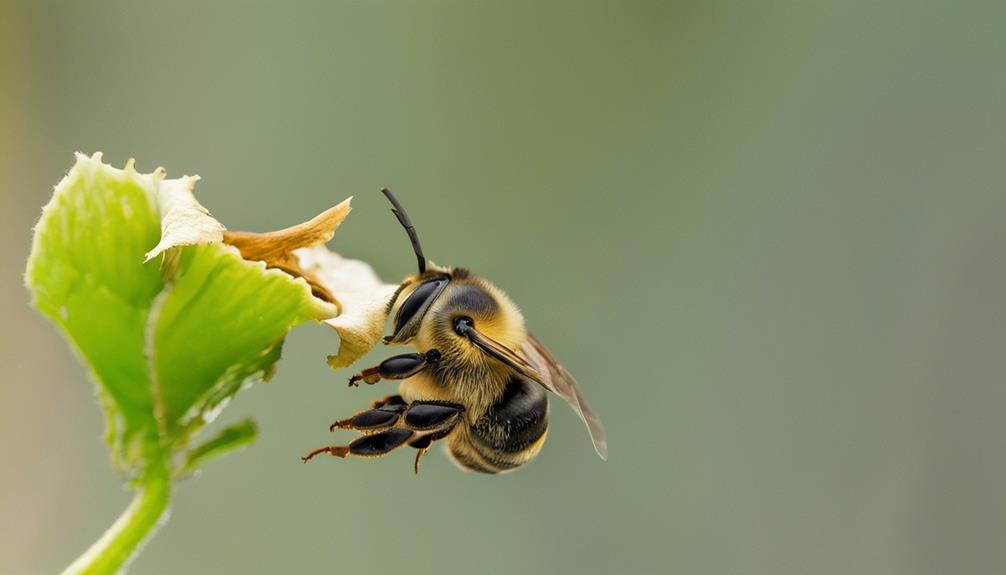
While the life cycle of leaf cutter bees is undoubtedly fascinating, it's equally important to recognize their crucial role in maintaining the health of plants. As a gardener, you may initially view the circular holes in your plants' leaves as damage. However, it's essential to understand these bees aren't harming your plants.
These bees use leaf sections to construct their nests, but the leaf cutting doesn't harm the plant overall. Their actions can even stimulate plant growth, similar to pruning. In fact, leaf cutter bees are significant pollinators. As they move from flower to flower, pollen sticks to their hairy bodies and is transferred, facilitating plant reproduction.
Moreover, their preference for native plants encourages growth and diversity in your garden. Their presence can be an indicator of a healthy ecosystem. In essence, leaf cutter bees play a pivotal role in sustaining plant health.
Potential Damage From Leaf Cutter Bees
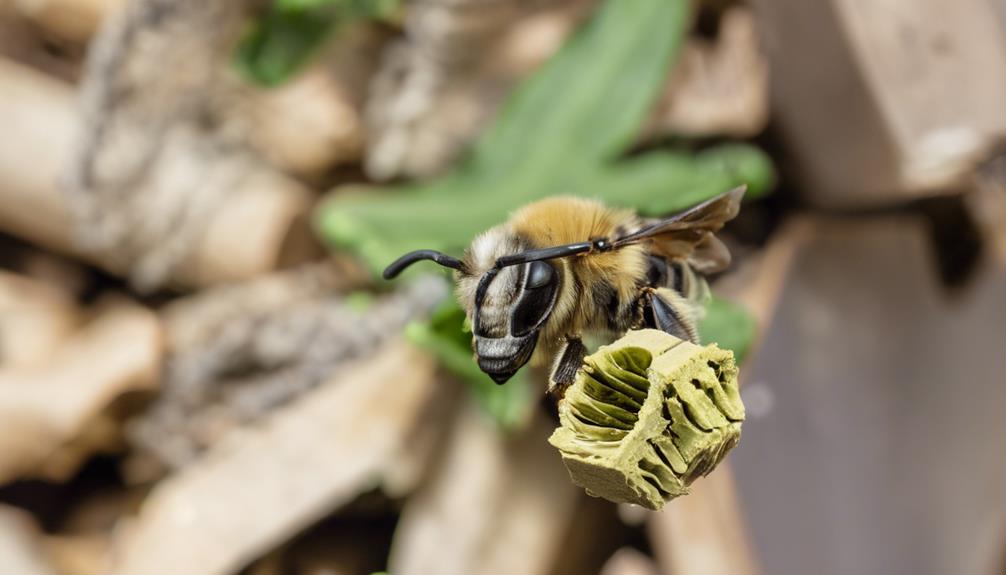
Despite their role in plant health, leaf cutter bees can potentially cause aesthetic damage to your garden, especially if they decide to colonize in large numbers. They don't harm the plant's overall health, but their leaf-cutting activities can leave your plants looking ragged.
Leaf cutter bees meticulously cut out circular or oval pieces from the edges of leaves, which they use to construct their nests. While they prefer certain plants, such as roses, green ash, and lilacs, they aren't particularly fussy and might choose any leaf that suits their needs.
The table below evokes the emotional impact of their potential damage:
Plant | Potential Damage |
|---|---|
Roses | Ragged edges and aesthetics affected |
Green Ash | Altered leaf shape causing potential concern |
Lilacs | Visible holes that mar the beauty of the plant |
Understandably, you might feel concerned about this. However, it's essential to remember that the leaf cutter bee's contribution to pollination and overall biodiversity far outweighs the minimal aesthetic damage they cause. Keeping them in your garden helps maintain a healthy ecosystem. Therefore, embracing these tiny leaf cutters might be a small price to pay for their massive contribution to nature.
Protecting Plants From Leaf Cutter Bees
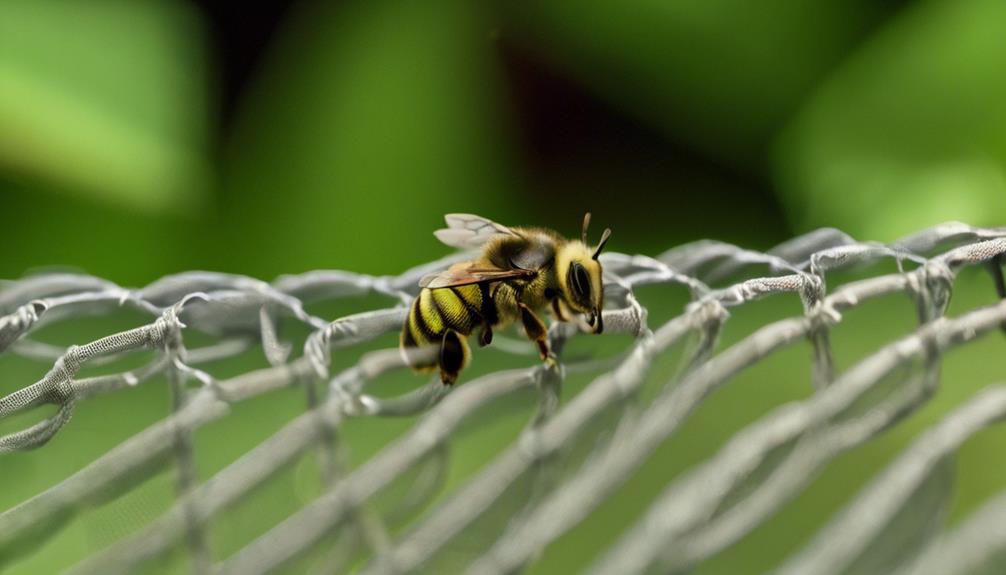
If you're keen on preserving the aesthetics of your plants without harming the leaf cutter bees, several strategies can be employed. Remember, these bees are crucial pollinators, so it's important to use methods that won't harm them.
Firstly, consider planting diverse species of plants in your garden. Bees often prefer certain plant types, so a varied garden may discourage excessive leaf cutting.
Secondly, you could employ physical barriers. A lightweight, breathable fabric can be draped over your most prized plants. This allows sunlight and water to penetrate while keeping bees at bay.
Another strategy is to provide alternative nesting materials. Leaf cutter bees are attracted to soft, thin leaves for their nests. Offering them a readily available source, like sections of non-toxic, untreated lumber or thick leaves from a non-valued plant, can divert them from your cherished flora.
Lastly, you can incorporate plants that naturally repel bees into your garden design. Certain herbs like mint and basil are known to deter bees.
Through these methods, you'll be able to preserve the beauty of your plants while coexisting with leaf cutter bees, promoting a healthy, biodiverse environment.
Conclusion
In conclusion, leaf cutter bees aren't your plants' nemesis. While they may nibble on leaves, they don't harm plants' overall health or productivity. In fact, they're vital pollinators, helping your garden flourish. Any damage they cause is mostly cosmetic.
So, when you spot those tell-tale circles missing from your leaves, don't panic. Your plants are playing a critical role in supporting these hardworking, beneficial insects. Protecting them ensures a vibrant, pollinated garden.

